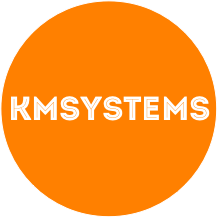At kmsystems we have build a lot of software and in most cases the time frame and budget we have to work with is tight, very tight. The challenge is to not only to meet tight deadlines and budget constraints but above all deliver something of value. The output or result of what we develop must add value to our clients existing processes and business otherwise there is no point in building the solution in the first place. I'm talking about not just solving a problem but solving it in the best possible way that adds the most possible value. Let's face it problems can be solved in a lot of different ways for example you can implement a manual process good old pen and paper, use Excel, create a simple Access database, the list goes on. We build software and its our job to ensure that the software solution we provide adds the most value over all options.
To achieve this we have found agile development methodologies to be an effective way to keep costs and time overheads low yet deliver something that the client will use and get maximum value from.
As part of our agile development practises we try to follow the "Manifesto for Agile Software Development"
We are uncovering better ways of developing
software by doing it and helping others do it.
Through this work we have come to value:Individuals and interactions over processes and tools
Working software over comprehensive documentation
Customer collaboration over contract negotiation
Responding to change over following a plan
That is, while there is value in the items on
the right, we value the items on the left more.
and we try to up hold these 12 principles which sit behind the manifesto:
- Our highest priority is to satisfy the customer through early and continuous delivery of valuable software.
- Welcome changing requirements, even late in development. Agile processes harness change for the customer's competitive advantage.
- Deliver working software frequently, from a couple of weeks to a couple of months, with a preference to the shorter timescale.
- Business people and developers must work together daily throughout the project.
- Build projects around motivated individuals. Give them the environment and support they need, and trust them to get the job done.
- The most efficient and effective method of conveying information to and within a development team is face-to-face conversation.
- Working software is the primary measure of progress.
- Agile processes promote sustainable development. The sponsors, developers, and users should be able to maintain a constant pace indefinitely.
- Continuous attention to technical excellence and good design enhances agility.
- Simplicity--the art of maximizing the amount of work not done--is essential.
- The best architectures, requirements, and designs emerge from self-organizing teams.
- At regular intervals, the team reflects on how to become more effective, then tunes and adjusts its behavior accordingly.
It has taken us some time to grow and adopt agile development but I think as a team kmsystems has been able to work fairly closely to these principles and deliver some great software especially on a few recent projects. As a leader I trust my teams to get the job done, however one of the obstacles we face over and over again is engaging the customer in the agile process and keeping them engaged for the length of the project. The agile process does require a higher level of commitment from both parties but the output end result is a far better product. Unfortunately this is not easy to demonstrate up front. I think that open honest communication about the process will give your client and you a good start that will carry you through to being able to demonstrate the value. Remember deliver fast and review often.
